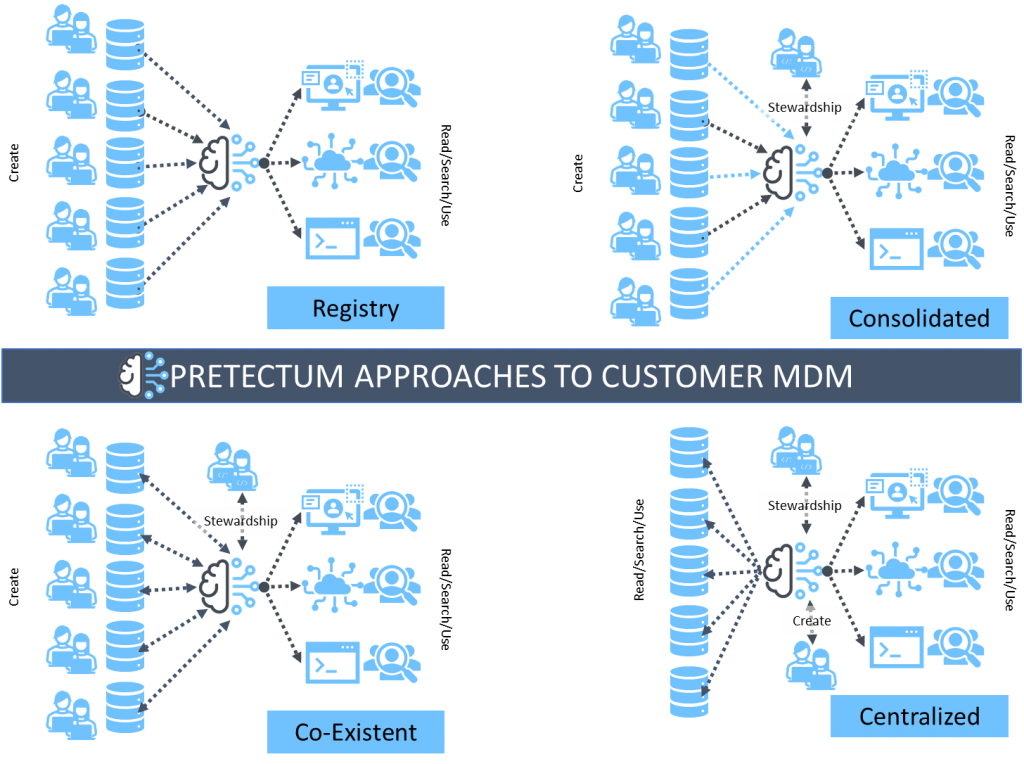In today’s data-driven business landscape, companies are increasingly recognizing the importance of managing and utilizing their customer data effectively. A customer master data platform (CMDP) is a powerful tool that can help organizations achieve the goal of more effective management and use of customer data.
At a high level, a data value chain is all the processes and steps involved in turning raw data into valuable insights and actions. This might include data collection, storage, analysis, and use. A CMDP is CMDM software that often sits at the center of the customer data value chain, helping organizations to bring together and unify customer data from diverse sources and systems.
One of the key objectives of a CMDP is leveraging it to help organizations overcome the challenges typically associated with data silos. Most organizations have data in different systems and platforms, making it very difficult to get a complete and authoritative view of the customer. A CMDP serves to integrate these disparate sources and bring the data together into a single, unified customer profile. This then provides a more holistic view of the customer and enables more personalized and targeted customer interactions.
Another way a CMDP often fits into the customer data value chain is by providing a foundation for advanced analytics and machine learning. By consolidating customer data and making it accessible in a standardized format, the CMDP enables more sophisticated analysis and modeling. Organizations that use a CMDP can then use machine learning to work on ways to predict customer behavior or identify patterns in customer behavior. These insights can then be used to optimize marketing and interaction scenarios and campaigns or even drive product offerings.
A CMDP offers up not only data unification and analytics but also supports the concept of “data activation”. This is where data-driven customer insights drive targeted marketing campaigns or personalized experiences across different channels. A CMDP might enable a retailer to send personalized recommendations to customers via email or display specific ads based on past purchase history or behavior.
Depending on your implementation approach, the CMDP can serve as a nominated single, trusted source of customer data, the CMDP becomes critical for ensuring data quality and accuracy, as well as minimizing the risk of errors and inconsistencies. By having that single source of truth for customer data, organizations can make more informed decisions and drive better business outcomes.
The CMDP becomes a powerful tool that helps the organization unlock the full value of customer data. Sitting at the center of the data value chain, as data continues to play an increasingly important role in business success, investing in a CMDP is becoming more and more critical.

The CMDP also supports data governance and compliance. With privacy regulations such as GDPR and CCPA, there is a greater emphasis on data privacy and security. Today it is more important than ever for businesses to have strong data governance practices in place. A CMDP can help organizations maintain compliance by providing a centralized platform for managing customer data and ensuring that it is stored and processed in a secure and compliant manner.
Organizations looking to improve operational efficiency by streamlining data workflows and reducing manual data entry also benefit. Automated data collection and management processes that converge on the CMDP, free up valuable resources and enable teams to focus on more strategic initiatives.
A CMDP is a powerful tool that can help organizations unlock the full potential of their customer data. Sitting at the center of the customer data value chain, a CMDP enables businesses to consolidate data from disparate sources, perform advanced analytics, and activate insights to drive better business outcomes in a compliant and operationally optimized way. Contact Pretectum today to find out how the Pretectum CMDM can be your CMDP.


